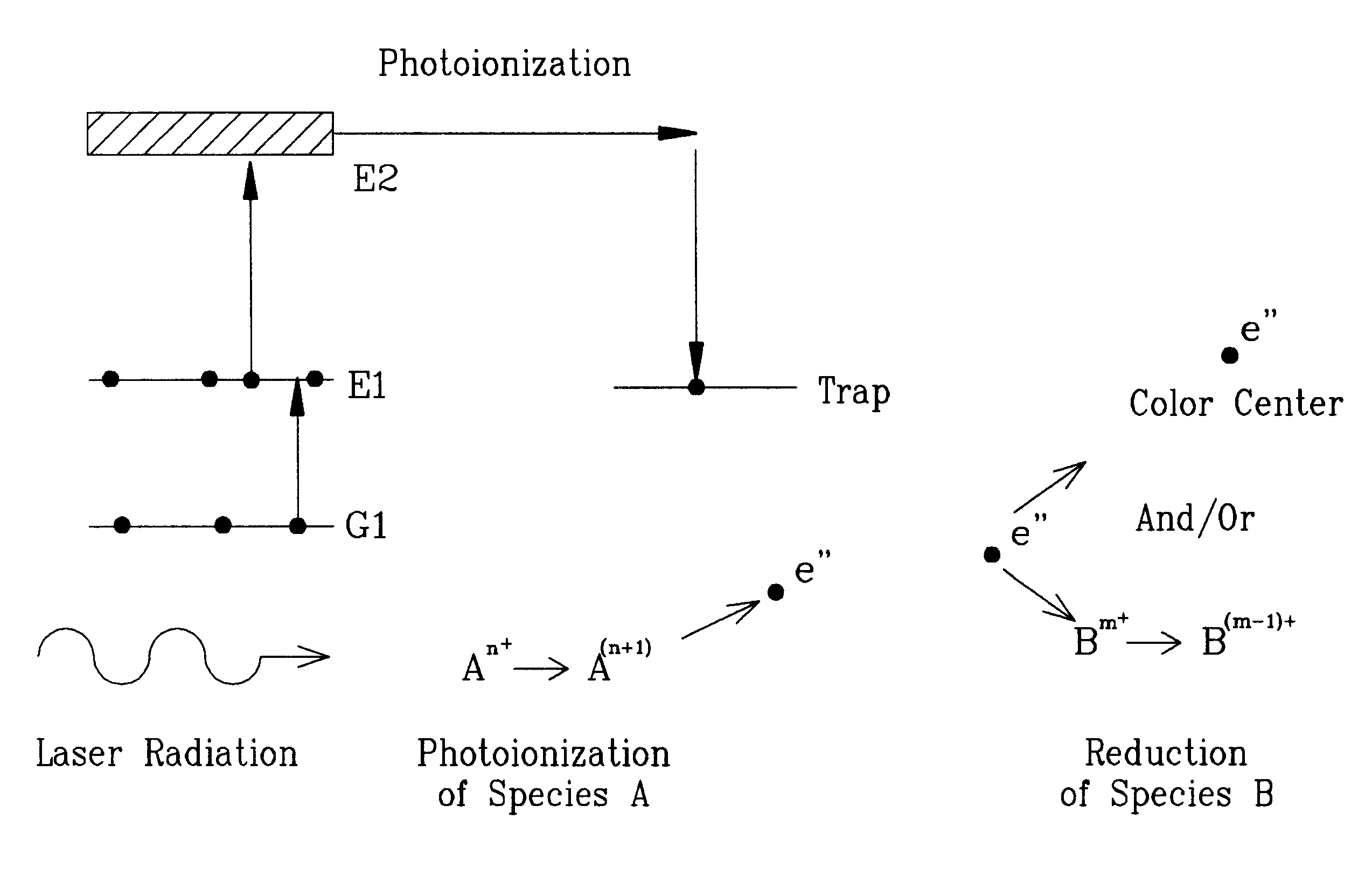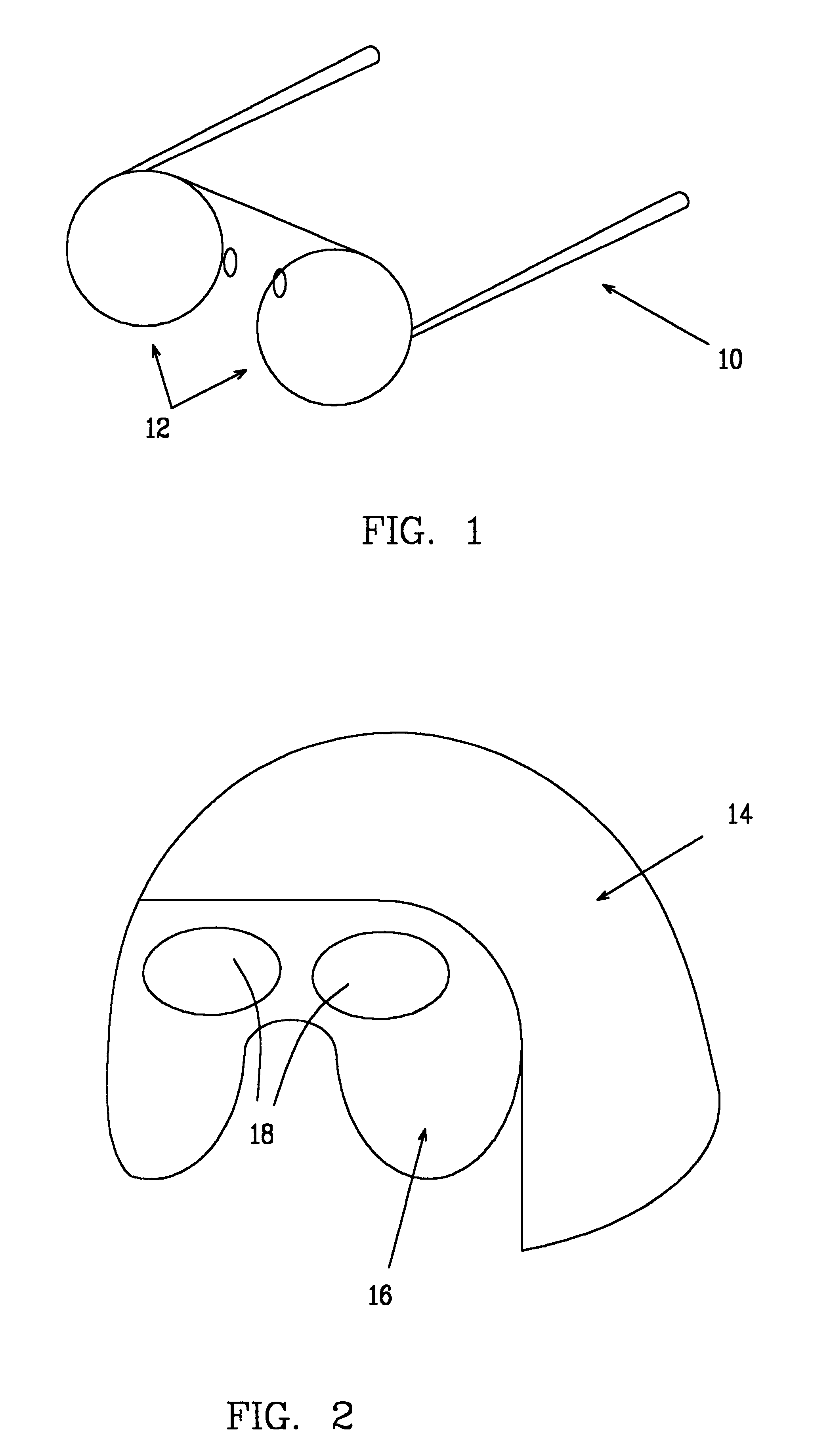Laser light optical limiter
a laser beam and optical limiter technology, applied in the field of laser beam limiters, can solve the problems of human eye, optical detectors/sensors and photo-receptors can be exposed beyond their capabilities, destroyed by either continuous or short-term laser beam exposure, and damaged retina of the ey
- Summary
- Abstract
- Description
- Claims
- Application Information
AI Technical Summary
Benefits of technology
Problems solved by technology
Method used
Image
Examples
Embodiment Construction
FIGS. 1 and 2 illustrate two of many forms of optical protective gear specifically and particularly available for pilots. Eyeglasses 10 have lenses 12 that may be made of the optical limiters of this invention. Lenses 12 will pass electromagnetic radiation in the visible spectrum (light) but will react to high intensity laser radiation and block the laser light. Blocking can occur as a result of numerous phenomena, two of which include: a) photo-reactive ions which undergo excited state absorption when exposed to laser radiation, and b) photo-reactive ions which photo-ionize when exposed to laser light resulting in new absorption bands which have strong absorption characteristics at the wavelength of the laser light. Similarly, the aviator helmet 14 of FIG. 2 has a visor 16, which may be fabricated of crystals 18 of this invention; or visor 16 may have crystals 18 of this invention laminated onto a visor support layer, and thus may serve as an optical limiter carrier.
In some cases, ...
PUM
| Property | Measurement | Unit |
|---|---|---|
| Transmission | aaaaa | aaaaa |
| Transparency | aaaaa | aaaaa |
| Wavelength | aaaaa | aaaaa |
Abstract
Description
Claims
Application Information
 Login to View More
Login to View More - R&D
- Intellectual Property
- Life Sciences
- Materials
- Tech Scout
- Unparalleled Data Quality
- Higher Quality Content
- 60% Fewer Hallucinations
Browse by: Latest US Patents, China's latest patents, Technical Efficacy Thesaurus, Application Domain, Technology Topic, Popular Technical Reports.
© 2025 PatSnap. All rights reserved.Legal|Privacy policy|Modern Slavery Act Transparency Statement|Sitemap|About US| Contact US: help@patsnap.com



